Why a 'model' farm built by the Salt family could become part of the Saltaire tourist trail
The Salt family built the imposing Milner Field in 1873 as a country residence for Sir Titus's son, Sir Titus Jnr.
The mansion sat atop Shipley Glen, from where its owner could look down into the valley at the giant mill and workers' housing built by his father.
Advertisement
Hide AdAdvertisement
Hide AdThe grand mansions that were home to Yorkshire's mill baronsBy the 1950s, it had vanished, and only a few traces of the brickwork and cellars remain in a woodland clearing. The Salts moved out after Sir Titus Jnr died in the billiard room, and later owners and tenants seemed 'cursed' by tragedy and scandal. It fell into disrepair before finally being demolished.
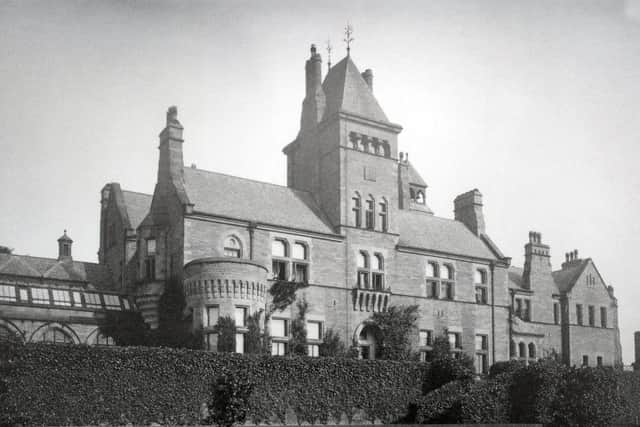

Yet one part of the original estate still exists - Milner Field Farm, a dairy farm run by the same family since 1903 and originally enclosed to supply the 'big house' with produce.
The current tenants, fourth-generation farmer David Downs and his wife Stella, are determined that the farm's place in Saltaire's history isn't forgotten, and they have campaigned tirelessly to protect the land from development.
Among the heirlooms at the Downs' farmhouse, where they have lived with their two sons since David's parents retired, is an original copy of the sale catalogue detailing the particulars of the entire Milner Field estate when it went on the market in 1922. After the Salts sold up, the wool business was taken over by Sir James Roberts, who lived in the house until 1911, after which it was let to the managing directors of the mill.
Advertisement
Hide AdAdvertisement
Hide AdThe Bradford suburb where you can buy a six-bedroom Victorian house for £180,000The document includes maps of the house, lodges, farmland and building plots; floor plans of the mansion's layout; photographs and even mention of proposals for a ring road to Baildon that was never built. The estate was offered for sale at a public auction at the Great Northern Victoria Hotel in Bradford.
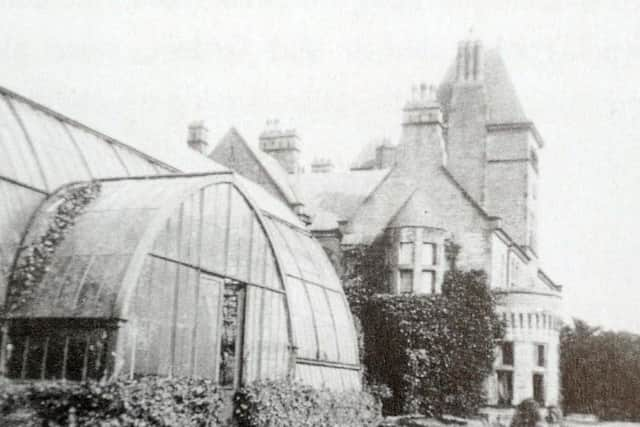

Poignantly, the house did not find a buyer, and it wasn't occupied again after 1930.
"The farm has been in my husband's family since 1903, when his great-grandfather took out a tenancy from Catherine Salt, Sir Titus Jnr's wife. We are still tenants - the land is owned by the Hartley Group, who also own many buildings in Saltaire," said Stella, who also works in marketing for Shipley College.
"The sale catalogue and maps include all of the buildings, such as the lodges - most of them have survived, although they've been done up and their uses have changed.
Advertisement
Hide AdAdvertisement
Hide Ad"The stone from the mansion is still in the woods, and you can look down into a pit where the cellars would have been."
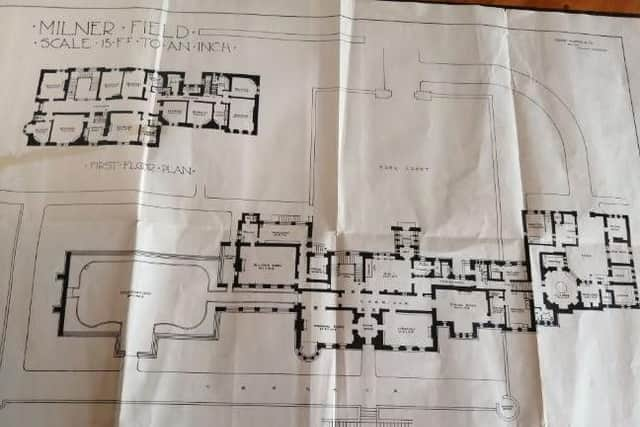

Since the couple moved onto the farm - David's parents had run the dairy since 1981 - they have opened it to the public for both the Heritage Open Days festival and Open Farm Sunday event.
"We had an exhibition about the farm's history in the barn. Milner Field was a 'model' farm - it was a hobby for Sir Titus, and if you look at the style of the buildings they are much grander than they needed to have been. The Salts were very wealthy people. But the farm did produce milk and beef for the house."
Saltaire: How an industrial village became one of Yorkshire's most desirable places to liveAfter the Salts left Milner Field, the farm continued to operate, and today still delivers fresh milk to customers living within just a few miles of the village of Gilstead.
Advertisement
Hide AdAdvertisement
Hide Ad"We serve the local area - we provide milk for local shops rather than supermarkets, and have our own milk round with glass bottles. We cover Shipley, Saltaire, Bingley, Cottingley and Cross Flatts. The departure of the Salts didn't have much of an impact on the farm."
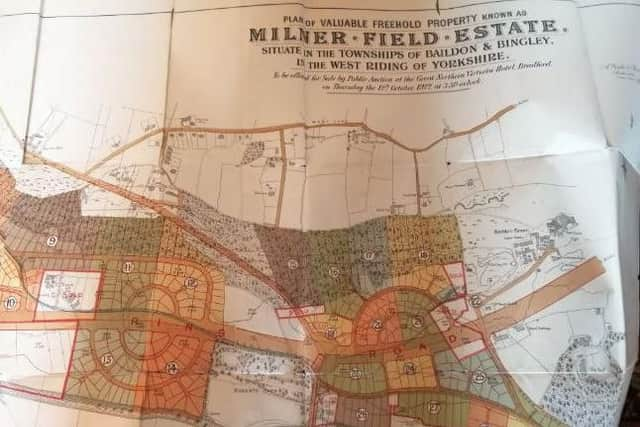

Stella started a Facebook group to protect the farm after learning of the landowners' plans to build an innovation centre on the site as part of an educational hub, which she feared may also eventually result in the development of new housing on the site.
"If that happened, the agricultural land would be gone. There's no guarantee we'll get to stay here. We have had some support from UNESCO (Saltaire is one of just two World Heritage Sites in Yorkshire) but we are not within the village boundary and the buildings aren't listed. The planning application was eventually pulled, but we don't know what will happen in the future."
They now hope to raise awareness of the farm and provide more opportunities for the public to visit now that Saltaire is a popular tourist destination.
Advertisement
Hide AdAdvertisement
Hide Ad"People don't really know where we are, as the entrance to the farm is hidden. The planning campaign did help to raise awareness of our connection to Saltaire, of its heritage and of the value of the green belt.
"Some of the people who came were local and grew up in Bingley, they told us they used to play in the ruins of the house as children and that they thought those woods were haunted!
"It really was a beautiful house. My parents remember it - my dad used to collect conkers from the trees on the estate. David's father still has a picture of himself and his sister with their father, Harry Downs, on the farm with the mansion in the background in the early 1950s."
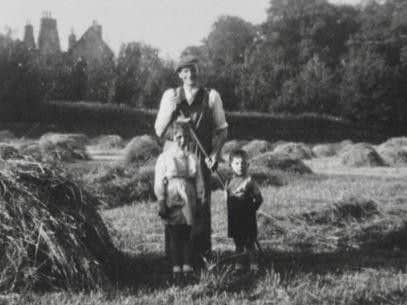

Inside the inner sanctums: Yorkshire's last remaining Victorian clubsMilner Field - the lost mansion of Saltaire
Advertisement
Hide AdAdvertisement
Hide AdTitus Salt Jnr commissioned the house in 1873, soon after he had married Catherine Crossley, a daughter of the Halifax carpet manufacturing dynasty.
It had an octagonal kitchen based on Glastonbury Abbey's, an orangery, a billiard room decorated with medieval court scenes, a croquet lawn and an 81ft domed glasshouse.
The then-Prince of Wales, the future King Edward VII, visited as did Princess Beatrice, the youngest daughter of Queen Victoria.
But tragedy struck when Sir Titus Jnr died in the billiard room in 1887, having been diagnosed with a heart condition two years earlier. By this point, the business was struggling - exports to America were affected by steep tariffs, and changing fashions meant there was less demand for wool. Badly-judged investments in mining and iron production in America exacerbated the financial difficulties. He had lived in the house for just 18 years.
Advertisement
Hide AdAdvertisement
Hide AdThe Salts Mill empire and Milner Field passed into the hands of Sir James Roberts, a self-made wool baron from Haworth who began working in mills at the age of 11. He was initially successful in running the business, but the curse of Milner Field seemed to dog his family.
Three of his four sons died in just a 14-year period between 1898 and 1912; the eldest, William, of pneumonia aged 24, the second, Bertram, of a nervous illness aged 36 and the youngest, Jack, drowned while on holiday in Ireland as a child. The surviving son, Harry, was badly injured in the First World War, and a nurse whom he had met in hospital and married died in the global influenza pandemic while pregnant.
Sir James's daughter Alice had eloped with medical student Norman Rutherford, the son of a local doctor in Shipley, in 1902 and married him in Scotland. He later became a decorated war hero, but in 1919 he shot and killed Alice's alleged lover, Major Miles Seaton. He was found guilty and sent to Broadmoor psychiatric hospital.
Bertram had four children at the time of his death, after which his brother Harry took over the management of the mill until he was conscripted into the army. He never returned to the business after his war injury and retired to a farm in Jersey. Bertram's eldest son, James Denby, inherited the business and baronetcy. Since 1911, the Roberts family have lived at Kilnsey Park in Wharfedale, which was once a sheep farm run by the monks of Fountains Abbey.
Advertisement
Hide AdAdvertisement
Hide AdThere were several unusual and premature deaths among the families who subsequently lived at Milner Field, and the house became difficult to sell or let as its ghoulish reputation grew.
Mill manager Ernest Gates moved in in 1923, but lost his wife to illness just weeks later. Two years later, he died of blood poisoning after cutting his foot - rumours were that he either scratched it on a rose bush or injured it with a golf club.
The final owner, Arthur Remington Hollins, took up residence in 1925 - both he and Gates had been managing directors at Salts Mill. His wife Anne died of pneumonia at 43 less than a year later, and three years later Arthur died on holiday from an irritation of the gall bladder.
The house was abandoned by 1930 and never occupied again. It was even raided for building materials to repair the mill, and during the Second World War was used by the Home Guard for grenade training.
Advertisement
Hide AdAdvertisement
Hide AdIt was demolished in the 1950s, although many locals struggle to remember exactly when.
Traces of the mosaic floor from the giant conservatory can still be seen, and the entrances to the cellars. The site of the mansion is completely overgrown.
One of the entrance lodges, North Lodge, survives and has been restored.
Sir Titus Jnr and Catherine's grandson, Nick Salt, is still involved in the preservation of the site.